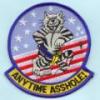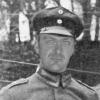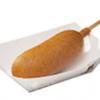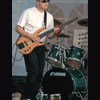Search the Community
Showing results for tags 'zoukei mura'.
-
At the IPMS/USA 2017 National Convention Zoukei Mura confirmed Source: https://www.cybermodeler.com/special/ipms_usa/ipmsusa2017.shtml V.P.
- 256 replies
-
- 4
-

-
Hello all, Here is my recently completed 1/48 Zoukei Mura F-4EJ converted to an F-4E AUP of 338 Mira, 117 Combat Wing, Hellenic Air Force based at Andravida Air Base. This is the last Squadron Flying the F-4 in Greek service. The build thread is below. Extras used included the superb Zeus Productions/Hypersonic Models AUP conversion set, Zeus decals, ProCal stencils, Quickboost ejection seats, Eduard Brassin printed ejection handles, Brassin Litening pod, Advanced Modelling Products camouflage mask, New Ware mask set and Res Kit FOD covers. The GBU-24s are from Hasegawa weapons set D. Paints are all MRP with the heavy weathering coming from a mixture of pre and post shading, Abetilung oils and some Tamiya sets. The Eagle Productions 'Phantom Under the Skin' book was used as reference throughout and is highly recommended! Onto the pictures! With my other European long nose Phantom: Thanks for looking Dave
-
Hello all, After delving through the stash and trying to pick out a subject for this GB (of which I have many!) I went for this; Zoukei Mura's 1/48 F-4EJ, converted and marked as an AUP of 338 Mira, 117 Combat Wing, Hellenic Air Force based at Andravida Air Base. This is the last Squadron Flying the F-4 in Greek service. I've been wanting to do one of these for a while so figured this was the perfect opportunity for it! Kit: Have a good bit of aftermarket for this one: Firstly, an amazing conversion set by Zeus Projects, cast by Hypersonic models. This has everything you need for an accurate AUP Phantom. I'll also be using Quickboost ejection seats, Brassin Litening pod, New Ware masks, Reskit FOD covers, Advanced Modelling products camouflage mask and some fantastic decals, again by Zeus Projects, which comes with a detailed reference booklet: I'll likely be adding a pair of GBU-24s from the spares as well. Finally, some references: The detailed photographs in the Eagle Aviation book are outstanding! Finally, some lovely photos here: https://www.targeta.co.uk/andravida_338mira_2016.htm Looking forward to getting started on this one. I've heard some mixed reviews of these ZM F-4Es so let's see how we get on! Dave
-
Hi folks, may I present my latest (and longest) project. Started this beast 2 years ago, ZM Ta-152-H1 in 1/48. It's retty difficult to build due to strange parts brakdown, lots of filling and sanding was required to finish it off. I was lucky enough to get the PE parts for it, but the most time consuming was placing of HGW rivets over the entire airframe. Painted with MRP Paints, weathered with oils. Enjoy the pics!
- 17 replies
-
- 66
-

-

-
Hi all, I've finally finished replicating the only existing Ho-229 V3 in the world that was previously being restored at Smithsonian museum and I'm quite happy with what I ended up with. The reference photo I used from Smithsonian air-space magazine is here:
- 34 replies
-
- 70
-

-

-
- ho-229
- Zoukei Mura
-
(and 1 more)
Tagged with:
-
I wasn't going to buy this kit, as I had already built the perfectly serviceable Hasegawa 1/32 J2M3 early last year and had been very pleased with how it turned out. However earlier this year I bought the Zoukei Mura Kawasaki Ki-45 Toryu kit and was somewhere between very impressed and completely blown away by the contents of that kit, to the point that I decided I needed* to get the Raiden kit as well. The prices for these kits are pretty steep from the outset, about equivalent to a Wingnut Wings kit, but in fairness the quality of the mouldings, instruction manual and presentation/packaging is about equal to WNW's products. A further point regarding the prices - these do vary significantly between stockists, I got mine from Tiger Hobbies and it was over £40 cheaper than the most expensive Z-M J2M3 kit I found on the internet (I don't have any affiliation with Tiger Hobbies, nor any connection except as a customer). Anyway, here are the constituent parts: Box - very sturdy, lovely box-art: Instruction book - yes, book: This is very impressive, as well as very nicely drawn instructions it has lots of photographs of the parts and how they look when they go together. The drawings are in black and white, the photos in colour, as is the painting and decal guide. Paint callouts are all for Vallejo but if you don't know what colours from your own favourite range you should be using, Nick Millman's Aviation of Japan blog has a .pdf available of colour notes for the Raiden, advertised in the right-hand margin about halfway down - for £6.50 it is worth every penny even if you only intend to build one Raiden. Here is a page of the painting and markings guide: The decal sheet and masking set included in the kit: The masks seem to be made of a very thin vinyl, I'll see how I get on with them, though I might not need to, since as well as the usual clear parts: ... in a little side compartment of the box are these: ... an incredibly thin canopy frame set plus equally thin glazing for the frames. I will definitely give these a go, but they look so fragile I am glad to have the standard clear parts as a back-up if in case I break them. Now on to the other parts, Sprue A, mostly engine parts: Sprue B, propeller, exhausts, fuel tanks, tyres and guns: Sprue C, fuselage interior parts: Sprue D, wingspar, undercarriage parts and a few more engine bits: Sprue E, fuselage exterior, rudder and landing gear covers: Sprue F, fuselage underside, stabilisers and elevators, auxillary fuel tank, more engine parts: Sprue G, upper and lower wings: ... and finally, Sprue H, ailerons and gunbay covers: So, although comparisons are odious, in this case for me they are unavoidable, it is inferior to the Hasegawa kit in that it does not include a pilot figure (and the Hasegawa one is excellent, if you have any interest in using pilot figures in your builds) and apparently equal in respect of the markings, as both kits offer exactly the same choices, although the Z-M kit also gives a set of spare numbers so that in theory you could make any of the aircraft that flew with the 302 Naval Air Group if you have suitable references. That's a little annoying, a greater selection or at least a couple of different options would have been nice, as there is very little in the way of aftermarket decals for the Raiden, but onto every life a little rain must fall and I shall build the version flown by Lt (JG) Yoshihiro Aoki, the famous one with the lightning bolts. As for the kit parts, there are probably about twice as many as those provided for the Hasegawa kit and they are easily as beautifully moulded if not more so, if the buildability is about equal I shall be very happy indeed. The level of detail is phenomenal and perhaps ultimately pointless if you prefer the painting stage and don't actually enjoy the assembly of a kit that much - I think I do enjoy that part equally, this should prove it to me one way or the other. I'll sort out my paints and get cracking shortly... Cheers, Stew * ... and when I say 'needed' of course I mean 'wanted'
- 95 replies
-
- 21
-

-
- Zoukei Mura
- 1/32
-
(and 1 more)
Tagged with:
-
Now the Corsair is finished, it’s time to pull a kit out I’ve been excited to do and gathering parts for. This is the Zoukei Mura Do-335 A-0, but I will be modifying it to a B-2 heavy fighter-bomber version. This will be a Luft ‘46 build, with a heavy dose of inspiration from @Out2gtcha’s excellent Do-335 build. I have a wealth of aftermarket for this one, including (but not limited to); HGW seatbelts Sprues from the HK Do-335 B-2 CMK Bombs Zoukei Mura Photoetch upgrade sets Eduard Photoetch upgrade sets Master brass barrels MDC resin guns and oxygen hoses And much more! This will be a long and intricate build with much modification of the kit. I am going to rivet the whole plane with the MDC rivet tool, one rivet at a time. I am contemplating trying a stressed skin effect on it too (not decided on that one yet!). We shall see how this goes! Here are some shots of my build so far; For those interested here’s some ‘history’ of the Do-335 from an alternate history concept I am working on; ‘Following many discussions in the Luftwaffe High Command, a push was made in 1942 to accelerate the Me-262 program as a counter to the increasing bombing raids the Allies were raining down on Germany. Hitler wanted the jet to become a fast fighter-bomber, but he was talked out of this by pointing out the Do-335 would make a superior schnell bomber with its increased bomb load and excellent flight characteristics. This led to funds and resources being diverted from other wonder weapon programs to boost the Do-335 production capabilities. The decreasing effectiveness of Allied bombing as the jet interceptors came online and started to take down bombers in large numbers, combined with resources gained from various areas in the Middle East and the Caucasus region allowed the Luftwaffe numbers to swell to sizes only seen in 1939. During the lull in heavy bombing as the Allied air forces reassessed their strategies, German factories began relocation into underground facilities that had been under construction for several months at that point. Dornier was able to significantly increase their output with heavy focus put into Do-335 production and modification. By late autumn 1945 the plant was turning out 9 planes a shift, 3 shifts a day, and numbers were only to increase. The Do-335 underwent significant modifications over its lifetime, later to become a fantastic heavy night fighter, often competing with Heinkel’s 219 as the preferred aircraft for that role. It is largely remembered for its role as a fighter-bomber and the damage it inflicted in rapid bombing campaigns during several key moments in the late war. The almost continual bombing of the Normandy beach head delayed the Allies gaining their foothold on the continent by several days, enough to bring panzer forces up to slow the advance further. Bombing of Allied positions during the Ardennes Offensive allowed German forces to reach Antwerp, cutting British and American lines leading to chaos among Allied top brass and a strategic withdrawal, if temporarily, back past the French border. The most famous operation the Do-335 was involved in was the ‘sealing’ of the Suez Canal during the rapid push into Egypt by Rommel’s Afrika Korps in early 1944. 15 Do-335 B-1’s go 3/JG.55 were tasked with destroying any facilities and shipping in the canal to prevent British reinforcement and resupply of their beleaguered forces in Egypt. After several runs hitting port facilities and merchant ships they came across a Royal Navy force trying to exit the canal headed by HMS King George V. The ships were steaming at an excessive speed for the canal hoping to exit the canal before being spotted and were bunched too close together in the tight confines. Hauptmann Martin Huber spotted the ships and led his flight down to bomb such tempting targets. The flak coming up from the ships and land based guns was intense, but the Dornier’s speed held them in good stead as they came down. Huber had given targets to each plane but the focus was the battleship. Performing a dive bomb the Do-335 hadn’t been designed for Huber’s flight dropped their bombs as low as they felt the could and pulled up and away fast. Fearing flak and enemy fighters, the Do-335’s sped away rapidly. Little did Huber know his run had dealt a fatal blow. A 500Kg bomb from his plane had penetrated the King George V’s main forward magazine and detonated. The resulting explosion blew the bow end of the battleship clean off killing 800 of the crew outright. The explosion was so powerful, and the proximity of the other ships in the flotilla so close, the two destroyers (HMS Nubian & Māori) were destroyed outright. The HMS Suffolk unable to stop in time plowed straight into the wreck of the King George V and led to a naval pileup which blocked the canal. Damage from the explosion obliterated ground forces in the area tasked with defending the canal entrance. No more British traffic was able to make it through, and would have to travel the long way around and into a South Atlantic heavily populated with U-Boats. The Afrika Korps were able to seize on the chance and several days later take the canal and push on into the Sinai.’ The Longest War: The Air War Over Europe & The North African Theatre 1939-1948
- 6 replies
-
- 7
-

-
- Do-335
- Zoukei Mura
-
(and 1 more)
Tagged with:
-
A late finish from the Vietnam GB and my favourite aircraft . The kit is the superlative Zoukei Mura F-4C. This airframe 64-0829 is probably best known as Robin Olds's Scat XXVII in the SEA scheme and he achieved two MiG 17 kills with it on 20 May 1967. However this is the jet seen in its twilight operational scheme with the Texas ANG before it was repainted in its better known SEA colours again as an exhibit at the National Museum of the US Air Force. Link Aftermarket used: Caracal Decals CD48038 Air National Guard F-4C/D Phantom Part 3 - Really good sheet with some interesting schemes of early Phantoms in their later years of ANG service. The decal quality, thinness and colour density are excellent. Looking forward to using their decals again, the fit especially on the fin flash was fantastic. @CaracalModels ZM F-4C/D Etched Brass - Made by Eduard for ZM's own label. Aires Martin Baker Mk.7 Seats. Eduard Fabric Ejection Seat Belts. HGW RBF Tags. Quinta Ejection Handles (from their phantom sets). Master Pitot tubes Paints are Gunze with levelling thinners, over a black Gaia Notes primer coat. Post lightening and shading done with adding greys and yellows. Alclad 2 for the metallic shades with lots of masking Matt finish is SMS Matt Varnish Original Build Thread: After this enjoyable build, I'm looking forward to see what Tamiya can do with the Phantom in 1:48 scale
- 37 replies
-
- 82
-

-

-
- Caracal Decals
- Zoukei Mura
-
(and 1 more)
Tagged with:
-
Hi everyone, now available in my web shop and from a few retailers is my latest set, a slatted wing conversion for the Zoukei Mura F-4E (early) hard wing kit. Yes, I know that ZM will eventually release their own, but this is for those who really want to build their slatted F-4E now and maybe also offers a little bit more than the out-of-the-box option will do later... In the package are: slatted outer wings (the main wing parts are cast in extra strong resin to prevent warping), drop-in slat inserts for the inner wings, ARN-101 system antenna, TISEO, upgraded WSO cockpit consoles and instruments, strike cameras, belly/wing reinforcement strap and slime lights (with paint masks). https://www.hypersonicmodels.com/product/f-4e-late-slat-conversion Some pics: Many thanks indeed! This set is forming the basis of two further projects, a Hellenic Air Force "classic" F-4E conversion as well as a HAF F-4E AUP. Both are in the works and will be released under the "Zeus Project" label at The48ers.com Cheers, Jeffrey
-
- 1:48
- Zoukei Mura
-
(and 1 more)
Tagged with:
-
Hallo This kit was a challange. Since many plastic and etched parts in the cockpit area had to be redisigned. Happy modelling
-
Hi Phantom Phanatics two new 1:48 pylon sets are now available from Hypersonic Models and partner shops! Outer pylons, Air Force type, for Zoukei Mura kits, with separate sway brace pins and of course the correct outboard cant: https://www.hypersonicmodels.com/product/f-4-phantom-outer-pylons-air-force And a centreline pylon, designed specifically to fit on/around the moulded on ejector rack on the ZM kit. Separate stabiliser bolts and sway brace pins allow for best fit and maximum flexibility. https://www.hypersonicmodels.com/product/f-4-phantom-centreline-pylon Thank you very much for looking, I hope you will like these new sets Cheers, Jeffrey
-
One of the two new 1/32nd models to be announced by Zoukei-Mura at Telford SMW 2016 is a Kawasaki Ki-45 Toryu "Nick". Source: http://www.zoukeimura.co.jp/sentiment/oyajiblog_089.html V.P.
- 24 replies
-
- 1
-

-
- Ki-45
- Zoukei Mura
-
(and 1 more)
Tagged with:
-
Zoukei Mura next Phantom will be 1/48 McDD F-4C/ D Phantom II Source: http://hobby.dengeki.com/event/381679/ V.P.
- 50 replies
-
- 3
-

-
- F-4
- Zoukei Mura
-
(and 1 more)
Tagged with:
-
Hallo again This is my P-51 Mustang. 1/32 Kit is Zoukei Mura. Happy modelling
- 4 replies
-
- 18
-

-
- Mustung
- Zoukei Mura
-
(and 1 more)
Tagged with:
-
Hi, a couple of days ago I released my first new "Made in Japan" product. I corrected the shape error on the aft fuselage on the otherwise great Zoukei Mura short nose Phantoms. There's a huge controversy among modellers whether or not the shape error matters, is visible, should be discussed bla bla bla.... The fact is, the error is there, I can see it, in particular next to other Phantom models, I want it corrected and I did something about it (rather than just scream booo hisss at the manufacturer...). So here it is - it's a whole new fuselage section so you need to cut the kit fuselage (but near fool-proof cutting guide strips are provided) and do a bit of sanding/blending on the remaining plastic. Again, whether or not you deem this worth the trouble is up to you. I also added some finer detail to the chaff/flare bucket doors. Installed: Detail: Cheers! Jeffrey
-
- 1
-

-
- 1:48
- Zoukei Mura
-
(and 1 more)
Tagged with:
-
Gonna be my dad´s winter project, don´t know yet which scheme, a prototype or a whiffer DSC_0004 by Reinhard Spreitzhofer, auf Flickr
-
Hi Everyone. I was please to be in receipt of the new SWS 1/48 F-4S kit from Zoukei-Mura. As the second kit in their new series of 1/48 F-4 Phantoms, It follows the fantastic F-4J kit in offering details never offered to the Phantom lover in any scale for a slat wing Model. I am building this for the coming US IPMS NATS so this will be a quick build in terms of posting time, as I am working on it 8-10 hours a day on most days. In addition to the kit, I will be using HWG Seat belts, Master Model Metal AOA and Pitot set, GT Resin Exhaust nozzles, with a few added scratch details thrown in. A couple of general notes about the build. First, in providing the details there are some fragile parts where extra care needs to be taken removing them from the sprue. Second, the fit of the parts is exact, so care must be taken to completely remove sprue attachment points, and and occasional flash when assembling the parts to assure that everything fits as it is designed to fit. Here is the kit: Stay Tuned!
- 18 replies
-
- 4
-

-
- Zoukei Mura
- F-4S Phantom 1/48
-
(and 1 more)
Tagged with:
-
Oh dear this one come up so quickly it caught me by surprise I still thought I had another month to go before this one! I’m the first to start a thread but I think this will be to just grab a space as I am still so far behind on other projects!! A 1/32nd SWS Ta-152H-1!!! Not a scale I normally work in but for some aircraft you just have to go large and this is one of them! I have so wanted to build one of these or any SWS model for so long, this will be my third attempt to. The first was to be an Ho-229, I pre-ordered one but had my money stolen by a dodgy dealer (there’s a whole thread on BM about these scum bags!), the second a Ta-152H-1 like this but it was lost by evilBay’s “Global Package Loosing System”, least I got my money back from that! So this is the third attempt! I would love to say such an amazing model will be straight form the box, it should be…..but I have a few plans for it! No outrageous mods, will leave that for other builds, just some PE flaps and interior plus some Master brass barrels. No idea of a scheme as yet but she’ll be a factory fresh one for a change…..maybe! Not a lot to her so all the work will be getting the details and finish right……
- 77 replies
-
- 6
-

-
- Focke-Wulf
- Ta-152
-
(and 1 more)
Tagged with:
-
Horten Ho.229 1:48 Zoukei Mura The Horten brothers were a pair of visionary siblings that designed a series of flying wing gliders in pre-WWII during the period when Germany was prohibited from having an air force. Each design improved on the last, and once the Luftwaffe broke cover in the expansionist phase before WWII, development began in earnest. The requirement for a light bomber capable of the 3x1000 by the RLM, which was for an aircraft capable of carrying 1,000kg 1,000km at 1,000kph in 1943 set the wheels in motion that resulted in the Horten.IX, which is better known as the Ho.229, and sometimes referred to as the Go.229 due to the fact that the Gothaer factory had been chosen for production examples. The flying wing had a low drag form, and the addition of two jet engines gave it the potential to fulfil the requirement, although it suffered a little from lateral instability due to its shape. The first prototype flew un-powered and with fixed landing gear in 1944, with results that bore plenty of promise before crashing due to a pilot error. Gotha altered the design in practical ways to ease production and increase longevity, as well as adding an ejector seat that was probably as much of a danger to the pilot as being shot down. Another prototype was lost due to an engine fire, but this did not deter the RLM from striving to reach production, despite the worsening situation for Germany in Europe. The third prototype was enlarged, and it was this that fell into the hands of the advancing US troops, and subsequently the Operation Paperclip boys, who took it back to America with plenty of other advanced designs. It remains there to this day, in the restoration area of the Smithsonian's NASM, and you can see some stunning photos and interesting text on their mini-site. The Kit If you've already seen their superlative kit of this very same aircraft in 1:32, the text above might sound familiar, and once you open the box, the contents will too. I did a part-by-part comparison between the two kits, and although the sprues are laid out quite differently from the larger one, the parts are almost identical with only a few differences to comply with the constraints of injection moulding styrene. A few of the clear skin parts are frosted now too, which actually makes a little more sense than previously. I'm still scratching my head about the usefulness of the clear skin however, but that's just me. The box is clearly smaller, but just as well packed at the big one, with nine sprues in a mid-grey styrene, and four in clear – most of which is frosted. There is also a large decal sheet, instruction booklet, plus two sheets of additional instructions that should help to clear up any head-scratching moments. Detail on the sprues is superb, and the whole airframe is depicted, as you'd expect from ZM in any shape or scale. It's important to remember too, that ZM's ethos is to give the modeller a construction experience, which is subtly different from just building a model. They like their customers to know what is going on under the skin of their kits, and as such if you build the kit with everything buttoned up, there is bound to be some detail lost to darkness. Construction begins with the engines, and here there are the most changes from the complexity of the 1:32 version. Instead of dozens of compressor blades, you get just the front and rear parts, which is entirely understandable to be honest! There are still a lot of parts, and all of the external greeblies are included, along with a stand that is built into the sprue runners, should you decide you want to leave one or both of them out for display. The completed engines are set aside while the airframe is built up, and frame is an excellent description of the tubular interior construction. The main bottom frame is the floor for the assembly onto which the various additional frames, control linkages and ribs are installed. There are statements about the correct construction order throughout, and this is one time where even engineers would be best served by reading the instructions. The big Mk.103 cannons and their magazines are installed just inside the wing root ribs, and here the detail on the muzzles is superb. The ammo feed exits the side of the rib, and re-enters lower down into the breach of the cannon on both sides. With the lower interior completed, the heat-resistant armour-plating parts are laid in their recesses and the engines if fitted are installed over them. Now the upper framework is added, and numerous scrap-diagrams show the correct location of the attachment points, which will be very helpful indeed. The cockpit is held on a framework between the engines, and these trap the rudder box in position, with the instrument panel frame and braces added over the top. The panel itself has a great deal of raised detail moulded-in, and two decal options are included. One option that covers the whole panel plus two more for small side dials, and the other which has individual decals for each instrument face. If only this was included in every kit. The landing gear was a mish-mash of existing parts, with a large single nose wheel and two smaller main wheels that gave the aircraft a distinctly nose-up stance on the ground. The legs are single parts with separate oleo-strut scissor links, and two-part wheels on each axle. The separate hubs of the larger kit would have ended up too fiddly for moulding, I'd imagine. A scrap diagram shows the correct angle of the aircraft on the ground after installation of the wheels and struts. With the internals almost done, attention turns to the exterior panels, all of which are moulded in clear styrene that has a frosted finish (in case you hadn't noticed). Again, the underside is first, with a central panel covering the majority, plus two shaped panels curving toward the rear "pen-nib". The nose is moulded in a beautiful, complex slide-moulded single part that encompasses both the cockpit aperture and engine intake lips. The air-brakes are next, which can be used deployed through the slots in the lower fuselage, or stowed by cutting off the actuator rams. With those in position, the upper fuselage can be added along with the two engine nacelle tops. The wings are built up next, with one being a mirror image of the other. They are constructed around a core framework, with four two-part fuel tanks placed within the "meat" of the wing, plus a joining rib at the root. They're joined to the fuselage by two pins each on the top and bottom surfaces, just like the real thing. The wing skins are then put in place, allowing you to fettle the joint to best match the fuselage skin. The flaps are all separate from the wings, with three sections per wing, and the rudder function is performed by drag-rudders that deploy from slots near the wingtips top and bottom. These are again supplied as parts with actuator struts, which are clipped off if you are planning to stow them for a clean airframe. The gear bay doors are also clear, and these are fitted to the edges of the skin or mounted on the gear legs as appropriate, plus a small compartment with two doors for the drag chute that is deployed on landing. The balance of the cockpit in the shape of the rudimentary ejection seat is glued together and installed, after which you can add the highly curved windscreen and the canopy, which has a grey styrene sub-frame added along with a cross-brace that contains the canopy retraction peg to allow it to slide open or closed. Adding a DF-loop, navigation lights, pitot and a long whip aerial so commonly seen under German WWII aircraft. Markings There are two schemes shown in the painting and decal diagrams, but there are three tail bands and two runs of numerals in white, yellow, red and green, so the world is your oyster in terms of markings. The painting guide shows one colour scheme of RLM81/82 over an RLM76 underside. Decals are printed in-house, but are of a high standard with good register, colour density and sharpness. The Swastikas are printed in halves to appease territories where its likeness is deprecated, and there are three types to choose from: white outline, black outline and solid black. Conclusion Again, there's the susurration of Dragon 229s being pushed to the back of the stash, as this is now the definitive 229 in 1:48, and as it is almost a smaller carbon copy of the 1:32 kit, there's a lot to like about it, and a great deal of wow factor to be had from the level of detail. A few of the cylindrical parts have had to be moulded subjectively slightly thicker due to the scale, but unless those tiny details bother you, there's nothing to complain about. Very highly recommended. Review sample courtesy of
-
Gentlemen. If you'll allow I'd like to share my current WIP with you. I've decided to start 2015 with a build that's a bit more ambitious than I'm used to. I was getting to the point where I felt like I needed to try a ZM kit. I thought for sure it was going to be the Horten, but a lot of WIPs of those have popped up around the web. On top of that, I had wanted to do the Revell Uhu last year, but opted for something else. Anyway, I wound up with this kit after the holidays, so here I am. This is a massive undertaking, and it would be easy for my obsessiveness and ADD to make things messy, so my approach will be to address each portion of the instructions as a kit of it's own. So updates will be a major milestones in that vain. First the engines. I won't really detail the process of finishing and weathering, but any questions anyone may have will be answered. I still need to get a clear coat on these and add some washes, filters, etc. So these aren't complete, but close.
- 15 replies
-
- 6
-

-
- Zoukei Mura
- WIP
-
(and 3 more)
Tagged with:
-
Hello, this is my new projet.... the HORTEN HO-229 in 1/32 scale by Zoukei Mura. I am planning to present it in the wonderful looking version with wood and metal surface. The seatbelts coming from HGW, the wheels are the resin ones from Zoukei Mura, also the metal gears. I started with the framework for the interior which consists of several thin frame parts which were all connected with each other. So dry fitting is absolutly important to avoid later problems in the fitting. After that I painted the finished frame work in green/grey color and brush painted the details of it. The metal parts were silver/gold painted and polished. As next step I started with the engine nozzle and put together the first parts of it. Unfortunatley most of these parts are no more visible later. Maybe I will find a possibility to keep one engine open so that the turbine blades of at least one nozzle will remain visible. Next step - painting of the nozzle parts in silver before putting the nozzles together (and trying to keep one open and the inside visible). Cheers Michael
- 43 replies
-
- 8
-

-
- horten
- zoukei mura
-
(and 2 more)
Tagged with:
-
Pictures coming soon, but I am now equipped with a Zoukei Mura Uhu, some groovy turned brass aerials, and a couple of books on the subject... Kagero's volume 2 monograph is amazing. I'm also waiting on some Radu Brinzan seat belts, aeroscale cockpit placards, and considering some Miracle Masks. So much for my philosophy of 'If it costs THAT much, it won't need any aftermarket.'. Cripes, it is (a) big, and ( complicated... but you already knew that, right? I'm conservatively estimating 9 months, forcing myself to go slow to do the best job I can. Wish me luck...
- 73 replies
-
- He-219
- Zoukei Mura
-
(and 1 more)
Tagged with:















